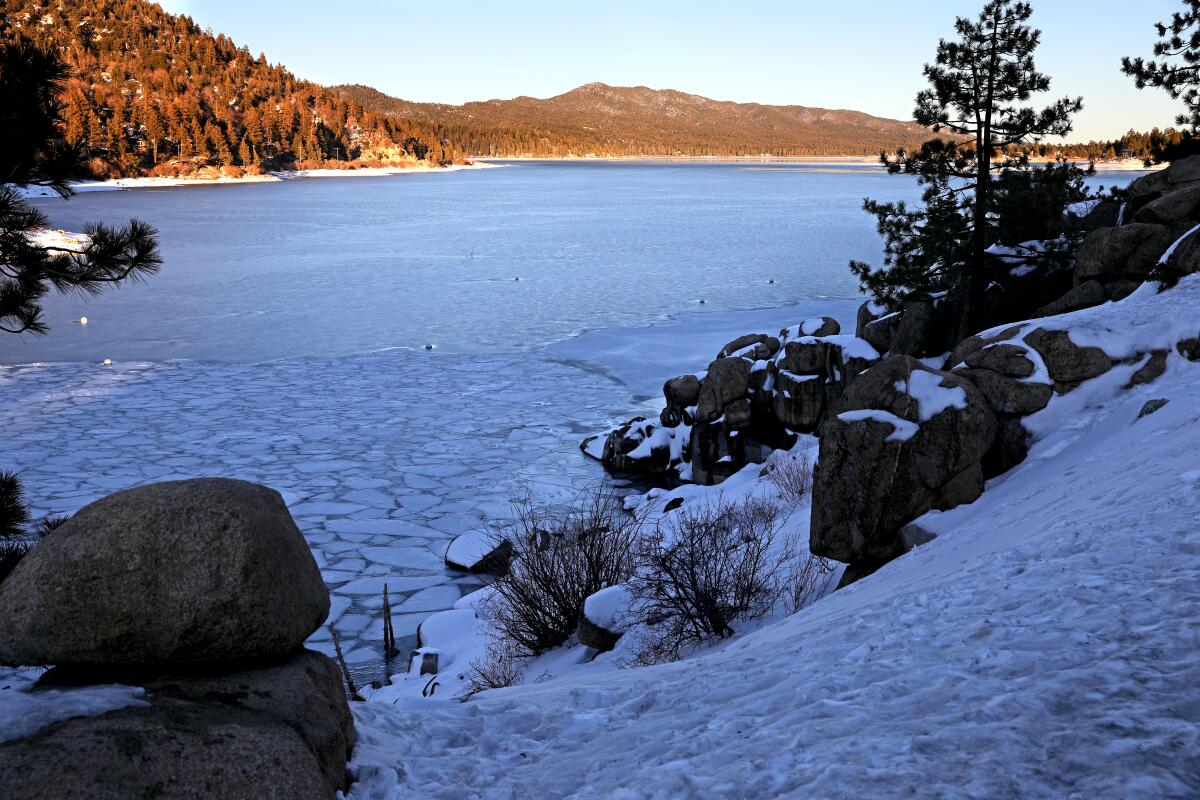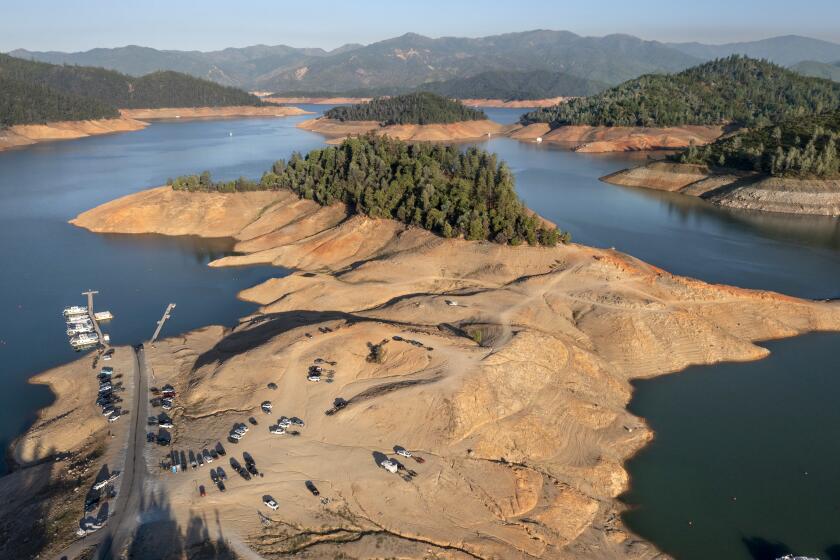Did the recent winter storms bring Big Bear Lake back to full capacity?

- Share via
In just the last few days, Big Bear Lake’s water level rose by more than 2 feet after almost three weeks of winter storms that dumped record rainfall and significant snow across the state.
Big Bear Lake rose to almost 58 feet this week, up from 55.6 feet Jan. 9 — a welcome change for a body of water that has struggled for years to keep from dropping, according to data from the Big Bear Municipal Water District. Michael Perry, chief executive of Visit Big Bear, pointed out that the lake has already risen 3 feet since the end of December.
“And it’s still going up — from streams [and] snowmelt,” Perry said. “We’re hoping if winter continues like this, we will continue to get significant increases in the water level in Big Bear Lake.”
The lake had fallen to some of its lowest levels in recent decades after one of the worst drought years on record, data show. The decline has for years forced crews to push the docks forward to reach the lake’s receding shoreline. The lake is still more than 14.5 feet below its capacity and hasn’t been full since 2011, according to the water district.
Deep splotches of dark red and purple signifying the worst levels of drought have been erased from California’s map, thanks to a series of powerful storms.
Big Bear’s smaller neighbor to the west, Lake Arrowhead, also recently saw significant increases in water levels, reaching its capacity this weekend, according to the Arrowhead Lake Assn. Thankfully, the lake hasn’t struggled as much with maintaining its water levels, said Stewart Reeves, the association’s lake supervisor.
“Our lake is full, surprisingly during a drought,” Reeves said. But he said the recent storms did quickly increase water levels, with the lake rising about 3 feet in just the last week.
Experts warn that these improvements — which have been recorded around the state — are far from a solution for the years-long drought. Though much of the state recently exited severe drought categories, the majority of the state remains in moderate drought as of this week, and 40% of the state is still considered in severe drought, according to data from the U.S. Drought Monitor.
The Metropolitan Water District of Southern California is calling on water agencies in the region to immediately reduce their use of all imported supplies.
“In general, it’s always good for the weather systems to come in and drop a lot of rain like we’ve seen, and see the water levels increase,” said Demetri Polyzos, manager of resource planning for the Metropolitan Water District of Southern California. “It’s not going to change things overnight, but it’s certainly putting us in the right direction.”
Many reservoirs in Northern California, where the winter storms hit even harder, have seen even more significant increases in water levels, Polyzos said, adding that he expects water restrictions in Southern California to be eased.
“There’s not one thing that will get us out of this dry situation,” Polyzos said. Though keeping track of current drought stages and lake and reservoir levels is helpful in monitoring the progress made on the years-long drought, he said he would like people to focus on ongoing conservation strategies.
“Are we doing everything we can today to prepare ourselves for the next dry cycle?” he said. “Everything we can use to conserve and use water wisely helps. We need to continue doing that.”
The full extent of how the winter storms affected the drought is yet to be seen, as the snowpack melts and watersheds keep moving, Polyzos said, adding that the region could also see more wet weather patterns. Though the series of atmospheric rivers has subsided, forecasters are again warning of severe weather along the Central and Southern California coast. The National Weather Service issued a high surf and coastal flood advisory through at least late Friday.
More to Read
Sign up for Essential California
The most important California stories and recommendations in your inbox every morning.
You may occasionally receive promotional content from the Los Angeles Times.
















